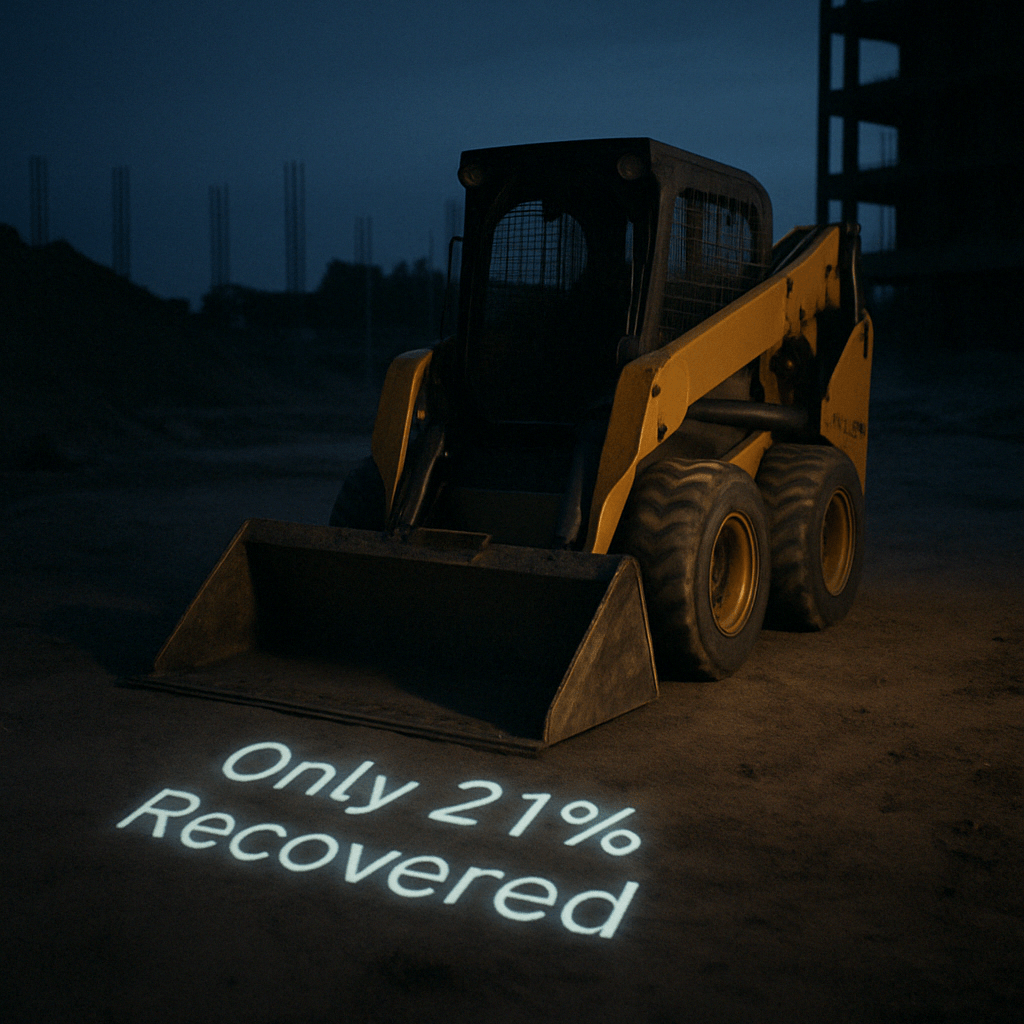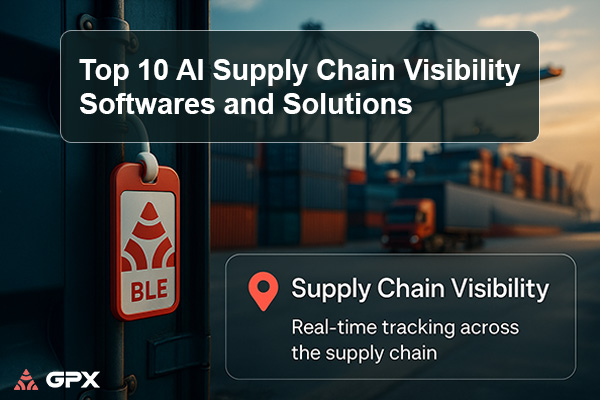The 7 Best GPS Tracking Solutions for Construction Equipment in 2025

Efficiently managing construction equipment is more important than ever as the industry faces rising theft and complex project demands. Finding the Best GPS Trackers for Construction Equipment is no longer a luxury, but a critical step for operational security and efficiency. Equipment theft cost the U.S. construction sector over $1 billion in 2023, with recovery rates lingering around a mere 21–22%. Contimod Construction Site Theft Statistics
To combat these challenges, GPS tracking has emerged as a powerful solution. The Best GPS Trackers for Construction Equipment enhance security, improve operational efficiency, and help construction businesses protect their assets while keeping projects on schedule. This guide will help you navigate the top options available.

Thieves often prioritize specific types of construction equipment due to their high resale value and portability. Small, easy-to-move machines and high-demand assets are particularly at risk, especially when left unattended at open job sites. Protecting these vulnerable pieces with some of the Best GPS Trackers for Construction Equipment is critical to avoiding major financial and operational setbacks. Here are some common targets:
- 🚜 Skid steer loaders
- 🏗️ Mini excavators
- 🔋 Towable generators
- 🚛 Utility trailers
- 🚜 Compact tracked loaders
- 🌿 Commercial mowers
- 🚜 Backhoe loaders
- 🔧 Welder generators
- 💡 Light towers
- ❄️ HVAC units and construction materials
- 🧰 Toolboxes
- 🛢️ Fuel storage tanks
Construction equipment theft continues to pose a costly threat, especially when job sites span large, unsecured areas. While traditional measures like fencing and security cameras provide basic deterrents, investing in the Best GPS Trackers for Construction Equipment adds a vital layer of protection. These systems deliver continuous, real-time visibility into asset locations, sending instant alerts if equipment is moved without authorization. This proactive monitoring enables rapid response, keeping your machinery protected whether it’s idling overnight or operating in remote zones. Learn more about GPX capabilities here.
Should theft occur, having one of the Best GPS Trackers for Construction Equipment significantly boosts recovery odds. Law enforcement can quickly act on precise location data, often retrieving stolen assets before they’re lost for good—saving thousands in replacement costs and project delays. Brands like LoJack have shown how effective GPS can be in real-world recovery scenarios. Beyond prevention, this technology empowers construction teams to stay one step ahead, securing their investment and ensuring equipment is always where it belongs
![]()
To help you choose the right solution, we’ve reviewed the top 7 options to find the Best GPS Trackers for Construction Equipment in 2025, ensuring your projects stay on track, secure, and profitable.
1. GPX Intelligence
Best Overall for Robust Construction Equipment Tracking
Construction equipment theft remains an alarming challenge, with nearly $1 billion lost annually, severely impacting operational efficiency and profitability. GPX Intelligence addresses these challenges with comprehensive, end-to-end tracking, providing complete logistics control and eliminating operational blind spots. Its versatile tracking solutions are specifically designed to mitigate theft, optimize asset utilization, and enhance overall project management.
Key Features:
- 📍 Real-time GPS tracking: Continuous and precise location monitoring.
- ⚠️ Automated alerts: Instant notifications for unauthorized movements and potential security breaches.
- 🔗 Seamless integration: Easily integrates with ERP, TMS, and WMS systems for holistic management.
- 🔋 Durable trackers: Battery-powered and wired trackers designed to withstand harsh construction site conditions.
- 🗺️ Geofencing capabilities: Customizable virtual boundaries to prevent asset theft.
Why It’s a Top Choice: GPX Intelligence offers the construction industry a specialized, comprehensive tracking solution that not only enhances security but also improves project timelines and asset utilization, making it an industry-leading choice.
2. Workyard
Efficient Labor and Equipment Management
Construction firms frequently struggle with untracked equipment and inefficient labor management. Workyard addresses these pain points through intuitive and user-friendly GPS tracking solutions, contending as one of the Best GPS Trackers for Construction Equipment when integrated workforce management is key.
Key Features:
- 📍 Real-time equipment tracking: Continuous monitoring of asset locations.
- 🕒 Automated clock-ins: Geofence-based employee tracking for precise labor management.
- 📊 Integrated reporting: Streamlined scheduling and cost tracking for improved project budgeting.
- 🔔 Theft alerts: Instant notifications for unauthorized equipment movements.
- 📱 Mobile access: Convenient smartphone app for real-time updates.
Why It’s a Top Choice: Workyard simplifies equipment and labor management, providing robust tools that significantly enhance operational efficiency and security.
3. Tenna
Advanced Asset Management with AI Integration
Heavy equipment management requires advanced visibility. Tenna leverages AI-driven tracking to deliver comprehensive solutions for asset lifecycle management, making it a candidate for the Best GPS Trackers for Construction Equipment for those needing deep AI insights.
Key Features:
- 📍 Real-time asset visibility: Accurate GPS tracking of equipment.
- 📹 AI-powered telematics: Enhanced safety through video analytics.
- 🛠️ Predictive maintenance: Proactive scheduling to prevent downtime.
- 📈 Detailed reporting: Comprehensive logs for inspections and usage.
- 📱 Integrated platform: Centralized asset management accessible via web and mobile.
Why It’s a Top Choice: Tenna improves equipment oversight and maintenance efficiency, enhancing safety and minimizing operational downtime.
4. Wireless Links
Reliable Tracking for Rugged Conditions
Construction environments demand rugged tracking solutions. Wireless Links provides durable, user-friendly GPS trackers ideal for harsh conditions, a solid choice when seeking the Best GPS Trackers for Construction Equipment for durability.
Key Features:
- 📍 Durable GPS trackers: Built to withstand harsh environments.
- 🔋 Long battery life: Ideal for extended use at remote sites.
- 🔔 Instant geofence alerts: Immediate notifications to prevent theft.
- 🛠️ Easy installation: Quick setup for minimal disruption.
- 📊 Robust reporting: Detailed analytics for enhanced asset management.
Why It’s a Top Choice: Wireless Links ensures reliable asset tracking without complex installations, providing essential security and visibility in tough conditions.
5. Linxup
User-Friendly Asset and Fleet Management
Efficient asset management and theft prevention remain critical. Linxup delivers accessible, robust GPS tracking solutions for straightforward management, often considered among the Best GPS Trackers for Construction Equipment for ease of use
Key Features:
- 📍 Real-time tracking: Instant visibility of equipment locations.
- 🔔 Customizable alerts: Immediate notifications for unauthorized use.
- 📊 Utilization reports: Comprehensive data on asset performance.
- 📱 User-friendly interface: Easy-to-navigate management platform.
- ⚙️ Maintenance alerts: Automated scheduling to prevent breakdowns.
Why It’s a Top Choice: Linxup combines ease of use with powerful tracking capabilities, significantly improving asset management and security.
6. CloudHawk
Cloud-Based Analytics for Large Operations
Managing multiple assets across extensive construction sites is challenging. CloudHawk excels with cloud-based analytics paired with reliable hardware, a strong contender for the Best GPS Trackers for Construction Equipment for large-scale deployments.
Key Features:
- 📍 Cloud-based analytics: Accessible data for real-time decision-making.
- 🔋 Extended battery life: Perfect for prolonged deployments.
- 📈 Utilization insights: Detailed data to optimize asset use.
- 🔔 Advanced alerts: Custom notifications for asset movement and usage.
- 📊 Robust reporting: Comprehensive visibility for asset tracking.
Why It’s a Top Choice: CloudHawk provides large-scale operations with actionable insights and superior asset visibility, streamlining management across complex environments.
7. Titan GPS
Comprehensive Fleet and Asset Management
Optimizing asset routes and reducing downtime are crucial for project profitability. Titan GPS addresses these with precise tracking and comprehensive analytics, rounding out the list of the Best GPS Trackers for Construction Equipment.
Key Features:
- 📍 Real-time tracking: Immediate asset location updates.
- 🗺️ Advanced geofencing: Prevent unauthorized equipment movement.
- 📊 Historical usage data: Detailed analytics for improved efficiency.
- 🚚 Route optimization: Reduced travel times and costs.
- 🔔 Instant alerts: Notifications for key events and maintenance.
Why It’s a Top Choice: Titan GPS offers extensive fleet management capabilities, ensuring optimal asset use, enhanced security, and reduced operational costs.
![]()
The ongoing surge in construction equipment theft and rising operational complexities underscore the importance of effective GPS tracking. Real-time location tracking, robust security alerts, and predictive maintenance capabilities offered by the Best GPS Trackers for Construction Equipment significantly reduce theft, minimize downtime, and optimize operational costs.
Investing in the right GPS tracking solution, specifically one of the Best GPS Trackers for Construction Equipment, is not just about addressing immediate security concerns. It’s a strategic move to optimize your construction operations, enhance productivity, and build a more resilient and profitable business for the future. With robust tracking capabilities, you can proactively overcome the challenges of equipment theft, improve asset utilization, and ensure compliance, positioning your projects for success in 2025 and beyond.
How long does it take to install GPS trackers on construction equipment?
Installing a GPS tracking device typically takes around 15 minutes per asset. The process involves attaching a compact, rugged device onto the equipment and registering it with the GPS tracking software.
Can GPS trackers work on older construction equipment?
Yes, the Best GPS Trackers for Construction Equipment can be installed on older models as well. Both wired and battery-powered devices are available, making GPS tracking accessible regardless of the equipment’s age or technology level.
How accurate is GPS tracking for construction equipment?
Modern GPS trackers offer highly accurate location data, often precise within a few meters. This accuracy ensures reliable asset monitoring, route optimization, and effective theft prevention when using quality GPS trackers for construction equipment.
What additional data can construction equipment trackers collect beyond location?
Besides real-time location, construction equipment trackers can collect engine hours, mileage, fuel usage, idle time, and even operator behavior. Advanced models also monitor conditions like temperature, humidity, and shock levels for sensitive equipment.
What are the most essential features to look for in a GPS tracker for construction equipment?
Key features include real-time location tracking, geofencing capabilities, robust reporting tools, integration with fleet and asset management software, and automated alerts for unauthorized equipment movements or usage.
How do GPS trackers help construction companies comply with labor regulations?
GPS trackers automate the logging of equipment usage times, employee clock-ins, and clock-outs, significantly reducing administrative overhead. This ensures accurate records, streamlined billing, and compliance with labor regulations such as the Fair Labor Standards Act (FLSA).
Can GPS tracking help optimize construction equipment usage?
Yes. GPS tracking identifies underutilized equipment and optimizes deployment across various job sites. This reduces idle time, cuts unnecessary rental costs, and enhances overall project efficiency.
Are GPS trackers durable enough for harsh construction environments?
Yes. GPS trackers designed for construction are ruggedized, weatherproof, and capable of withstanding extreme temperatures and tough conditions, ensuring continuous functionality even in demanding environments.
How can GPS tracking systems integrate with other software used in construction businesses?
Advanced GPS tracking solutions seamlessly integrate with popular accounting, payroll, ERP, and fleet management systems. This enables centralized data management, simplifying processes like invoicing, payroll, and maintenance scheduling.
Do GPS tracking systems require significant employee training?
Most modern GPS tracking systems feature intuitive, user-friendly interfaces requiring minimal training. Providers often offer customer support, training resources, and mobile apps designed specifically to simplify adoption among employees.

